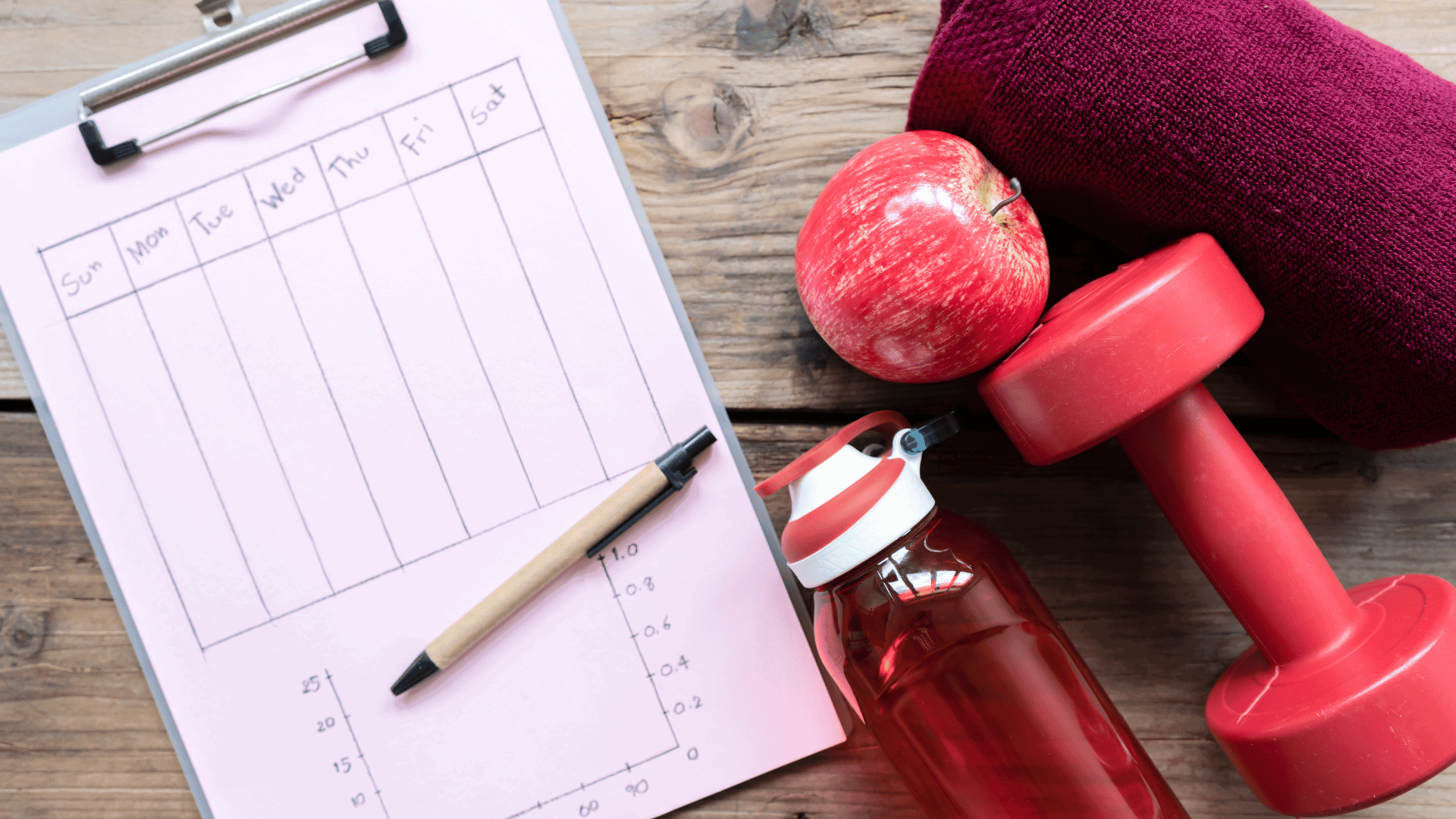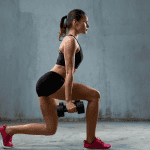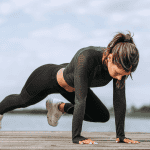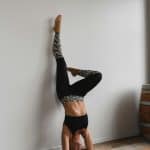Most people want to work out during the week but end up skipping days because nothing is planned ahead. You might have every intention to be active, but then work gets busy, errands pile up, and it’s hard to remember what you wanted to do.
It’s easy to bounce from one workout video to another or try random routines, but that only makes it harder to stay on track.
In this blog post, you’ll get a clear weekly workout plan. Each day has its own focus; strength, cardio, recovery, or rest. This schedule makes it easier to stay consistent and helps your body get stronger week after week.
Why Having a Weekly Plan Makes It Easier to Stick With

Working out is tough when you have to decide what to do every day.
One day it’s strength, the next it’s cardio, and by midweek, you’re either too tired or too unsure to keep going.
That kind of guessing usually wears you out fast.
A weekly workout plan gives your week structure. You know what’s coming and why it matters. (That alone makes a big difference)
It also keeps your body in balance. You won’t just repeat the same moves every day or push too hard without rest.
Each part of the week has a purpose; some days build strength, others raise your heart rate, and some help you slow down and recover.
That mix helps you avoid injury, stay motivated, and make steady progress.
And instead of losing momentum halfway through the week, you’ll have a routine you can repeat again and again, without needing to change everything.
Your Weekly Workout Schedule, Broken Down Day by Day
When you have a plan, it’s easier to show up. This weekly workout schedule gives each day a clear focus, so you’re not wasting time trying to figure it out.
The routine mixes strength, cardio, recovery, and rest. That balance helps you build muscle, improve endurance, and avoid burnout. You’ll follow the same structure each week. If needed, you can swap out exercises or shorten the time, but try to keep the rhythm steady.
Here’s how to move through the week, one day at a time.
Monday – Upper-Body Strength

Start the week by working your upper body. This means your chest, shoulders, arms, and back. These muscles help you carry, push, and pull in everyday life.
Try this basic setup:
- Incline Push-ups: Stand near a wall or use a countertop. Place your hands shoulder-width apart and lower your chest toward the surface, then press back up. This works your chest and triceps without straining your joints.
- Bent-Over Rows: Hold a pair of light dumbbells. Stand with your knees slightly bent and hinge forward at the waist. Pull the weights toward your ribs, then lower them slowly. This targets your upper back.
- Overhead Shoulder Press: Stand tall with a dumbbell in each hand. Press both weights up over your head, then bring them back down to shoulder height. This works your shoulders and arms.
- Bicep Curls: Hold the weights with your palms facing up. Curl them toward your shoulders, then lower slowly. Focus on keeping your elbows close to your sides.
Do 3 sets of each move with 10–12 reps. Rest about a minute between sets.
Tuesday – Lower-Body Strength
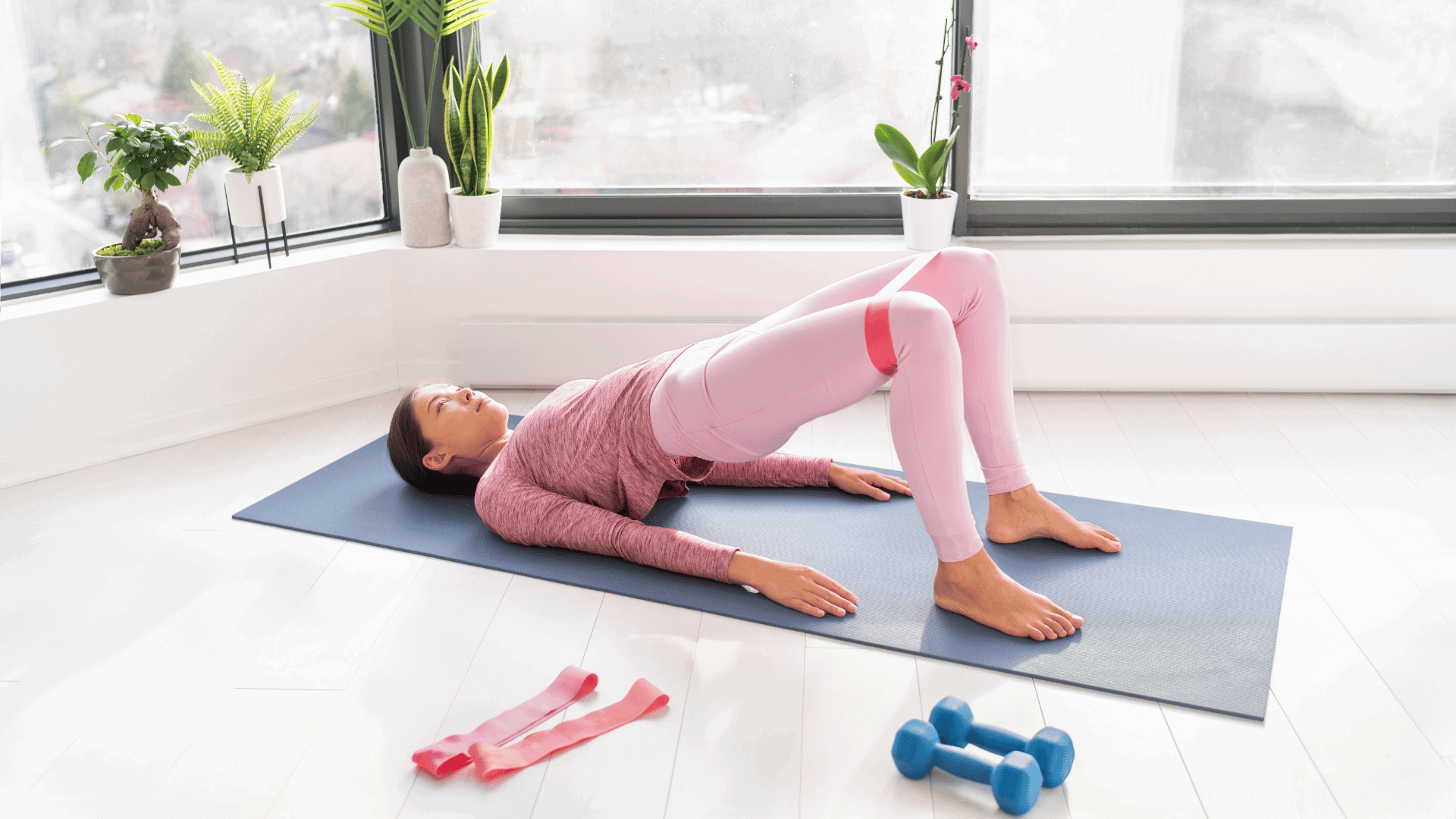
Next, focus on your lower body. These moves help strengthen your legs and glutes, which support your posture and balance.
Try these beginner-friendly exercises:
- Bodyweight Squats: Stand with your feet a little wider than your hips. Lower your hips back and down like you’re sitting in a chair, then press through your heels to stand back up. Keep your chest up and knees behind your toes.
- Glute Bridges: Lie on your back with knees bent and feet flat on the floor. Press through your heels to lift your hips off the ground. Squeeze your glutes at the top, then lower slowly.
- Step-Ups: Use a sturdy surface like a step or low bench. Step up with one foot, then bring the other foot up to meet it. Step back down and repeat. Switch your leading foot each time.
- Side Lunges: Step out to the right side and bend that knee while keeping your left leg straight. Push back to the middle, then repeat on the other side.
Do 3 sets of 10–12 reps per move. Take your time and keep your movements controlled.
Wednesday – Active Recovery
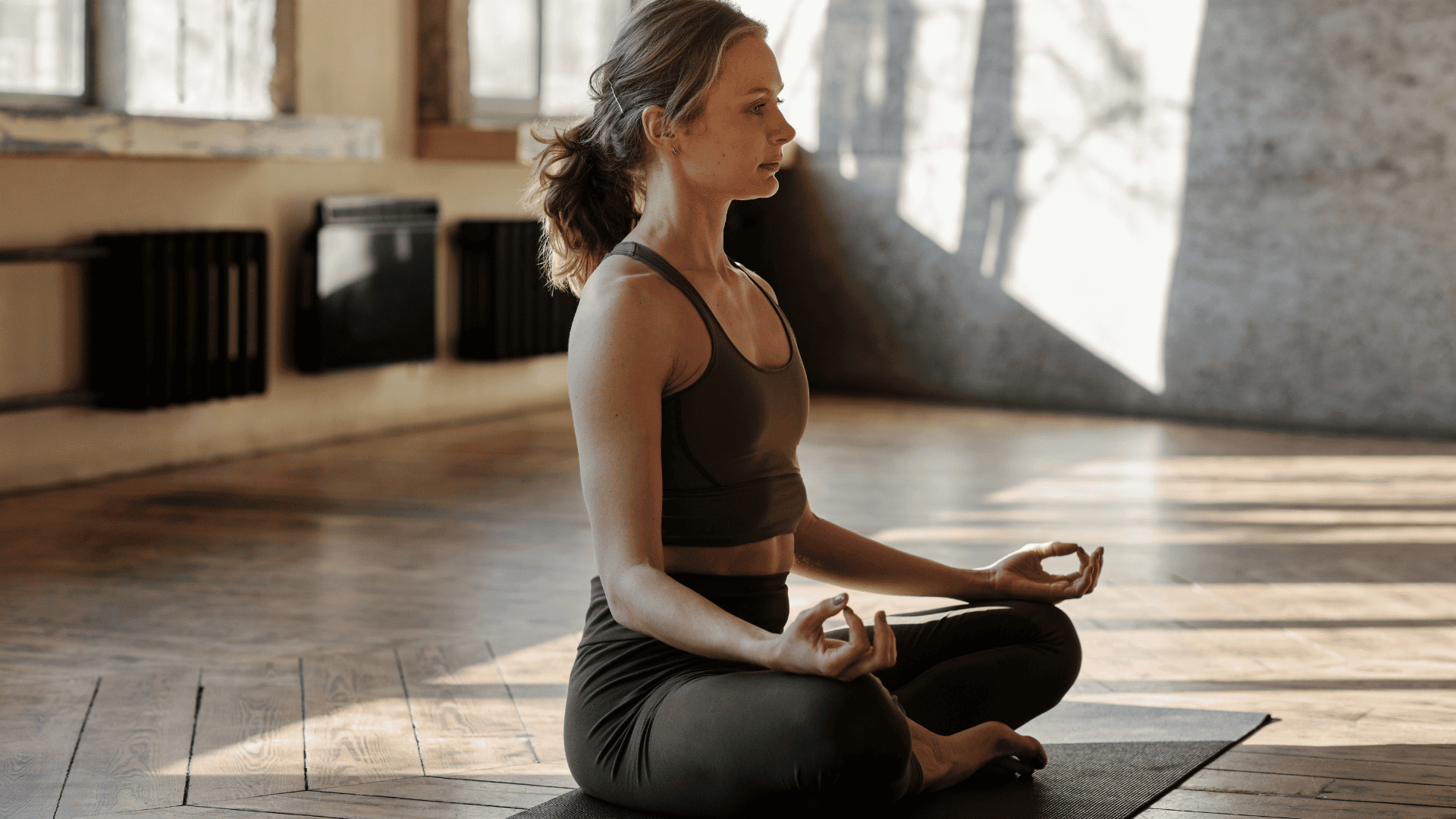
Midweek is the perfect time to slow things down. You’ll stay active, but without putting extra strain on your joints. This helps your muscles recover and keeps your energy steady for the rest of the week.
Good options include:
- Gentle yoga (you can follow a beginner video or just stretch slowly on your own)
- Barre or Pilates-style movement using bodyweight and slow, small-range motions
- A casual walk or light cycling for 30 to 60 minutes
There’s no right or wrong here. The goal is just to move gently and give your body a break from heavy work.
Thursday – HIIT Cardio

Now it’s time for a short but powerful cardio session. HIIT stands for high-intensity interval training. You’ll go hard for a short time, then rest, and repeat.
Here’s one way to do it:
- Choose a move like jumping jacks, stair climbs, high knees, or jogging in place.
- Do 30 seconds of fast effort (as quick as you can with good form).
- Then go slow or rest for 30 seconds.
- Repeat for 10 rounds. That gives you a total of about 20 minutes including warm-up and cool-down.
This style of training boosts your heart rate fast and burns more calories in less time.
Friday – Total-Body Strength

This is your last strength-focused day of the week, and it covers everything—upper body, lower body, and core.
Try these full-body movements:
- Squat to Press: Hold dumbbells at your shoulders. Do a squat, then press the weights overhead as you stand back up.
- Push-ups: Do these on the floor, on your knees, or on a bench. Lower your chest down, then push back up. Keep your core tight.
- Dumbbell Rows: Use the same form as Monday. Pull the weights toward your body to work your back and arms.
- Plank Hold: Get into a forearm or straight-arm plank. Hold your body in a straight line and breathe slowly. Start with 20–30 seconds.
Do 3 sets of 8–12 reps for each move. Rest as needed between rounds.
Saturday – Steady-State Cardio or Something Fun

This is a lighter day, but it still keeps you moving. You’ll do a longer session of steady movement to help build endurance.
Here are some easy options:
- A long walk outside
- A casual bike ride
- A fun dance workout
- Hiking, swimming, or playing a sport
Pick something you enjoy and go for 30–60 minutes at a pace where you can still talk without gasping. This helps build stamina without pushing too hard.
Sunday – Rest & Recovery
This is your full rest day. Your muscles repair, your energy resets, and your body gets stronger during this time.
If you want to move a little, do a short walk or some light stretching, but nothing structured. This day is about recharging both your body and your mind so you can start the next week strong.
How to Stay on Track Week After Week

Starting a new routine is one thing. Keeping it up is a different challenge.
Life (like it usually does) gets busy. Some days you have plenty of energy, and other days you don’t. That’s normal.
It helps to keep things simple and repeat what works. There’s no need to change your plan every week. Using the same schedule gives you less to think about and makes it easier to show up.
You can always swap out exercises if you want to try something new, but try to keep the main structure steady.
For example, if Thursday is your HIIT day, keep it that way, even if you change which moves you do.
Tracking your workouts, even with a simple note on your phone or a calendar, can help you see your progress and stay motivated.
If you miss a day, just move on to the next one. Don’t stress about it. Missing one workout isn’t going to stop your progress.
It’s not about being perfect. It’s about showing up most days and building steady habits that last.
Before You Start, Here’s What to Keep in Mind
There’s no such thing as a perfect week. Some days will go as planned. Others might not. That’s just part of it. What matters more is that you keep showing up, even when things get off track.
This weekly workout plan is designed to give you structure without adding pressure. You won’t have to think about what to do each day, it’s already mapped out. You’ll move your body in different ways throughout the week, with built-in time for recovery and rest.
The goal isn’t to crush every workout or go all out every time. It’s to stay consistent and make movement part of your routine. This plan helps you do that without doing too much.
You can go at your own pace. You can adjust the moves. You can make it fit your life.
What matters is that you keep going. The more steady you are, the stronger you’ll get, physically and mentally.
So start where you are. Follow the schedule. Make changes when you need to. You’ve got a clear path now. All that’s left is to begin.
Frequently Asked Questions (FAQs)
1. What if I can’t work out every day?
Not everyone has time to exercise seven days a week, and that’s okay. The goal is to do what you can and build consistency over time. If you miss a day, don’t try to double up the next day. Just move forward with the plan. Even three or four days a week can make a big difference when you stick with it.
2. Can I switch the order of the days?
Yes. If your week looks different than what’s listed here, you can shift things around. For example, if your only free time for a long walk is on Sunday, move steady-state cardio to that day and take your rest earlier in the week. What matters most is keeping the mix of strength, cardio, recovery, and rest—not the exact order.
3. Do I need equipment for this plan?
Some days include dumbbells or resistance, but you can still follow this plan with just bodyweight. Push-ups, squats, glute bridges, and lunges are all effective without added weight. If you want to add resistance later, start with a set of light dumbbells or resistance bands.
4. How long should each workout take?
Most workouts will take between 30 and 60 minutes, depending on the day. HIIT is the shortest, around 20 minutes. Strength days can take longer if you include rest between sets. You can always shorten the workouts if you’re pressed for time, something is better than nothing.
5. When will I start seeing results?
That depends on your starting point, your effort, and your habits outside of workouts, like food, sleep, and stress. Some people notice more energy and better strength after two weeks. Visible changes usually take 4 to 6 weeks. Keep going. The results will come with steady effort.
